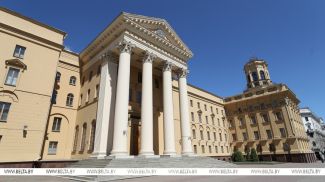MINSK, 13 September (BelTA) – Belarus will get equipment worth €6.5 million for the sake of monitoring air quality, BelTA learned from the administration of the project “Support for effective air emissions and radiation monitoring, and improved environmental management in Belarus”.
The project is financed by the European Union. It is being executed by the company Hulla & Co Human Dynamics KG in association with the Belarusian Natural Resources and Environmental Protection Ministry. The project is part of the general program Strengthening Air Quality and Environmental Management in Belarus (SAQEM). The project's partners are oblast committees of the Natural Resources and Environmental Protection Ministry, the National Center for Hydrometeorology, Radioactive Pollution Control, and Environmental Monitoring and the National Center for Analytical Control in the Area of Environmental Protection.
According to the source, a tender to acquire 452 units of equipment worth roughly €6.5 million has been a success. The delivery of the equipment required for upgrading 27 monitoring stations and labs for measuring atmospheric emissions will begin this year.
In line with the project three protocols to the Convention on Long-range Transboundary Air Pollution (CLRTAP) are being prepared for ratification: a protocol on heavy metals, a protocol on persistent organic pollutants, and the Gothenburg Protocol to abate acidification, eutrophication and ground-level ozone.
An improved system for issuing environmental protection permits will be tested soon in a number of Belarusian companies such as Minskenergo, Belshina, Belarusian Cement Plant, and Gomel Chemical Plant. The permits regulate the permissible level of impact on all spheres of the environment (soil, air, water).
The project also provides for developing sustainable green development plans for the Belarusian cities of Brest, Orsha, Grodno, and Pinsk. To make it happen, city streets will be fitted with sensors to measure traffic and air quality. The data will be displayed as a colored map on a computer. The map will demonstrate what emissions from what sources need to be reduced and by how much in order to change the dangerous color to a safe one. The experience may be adopted in other cities later on.













